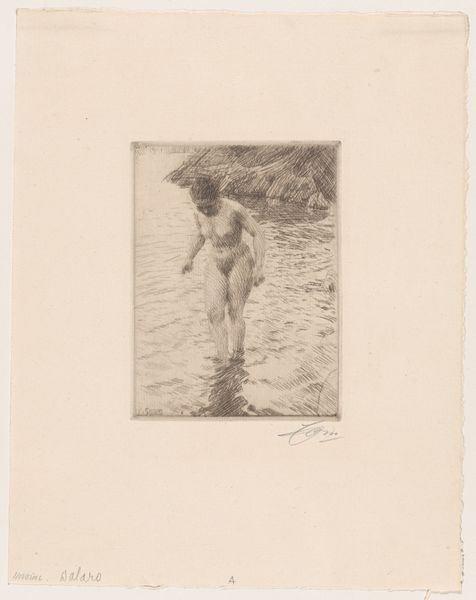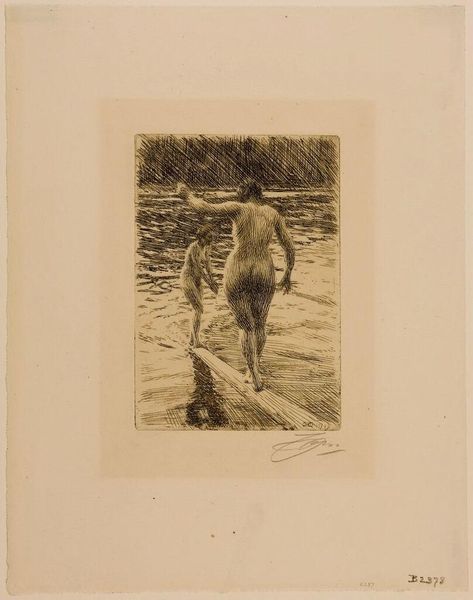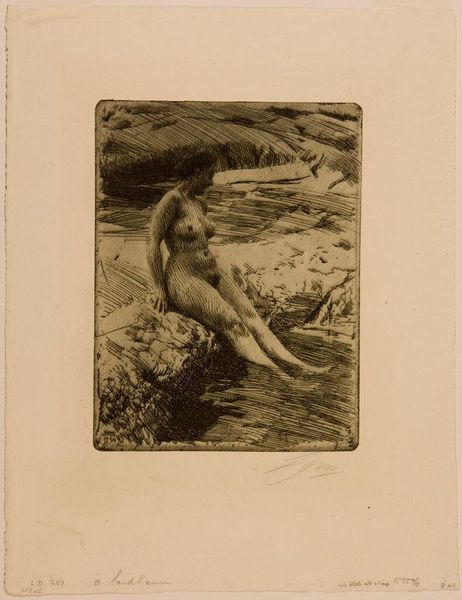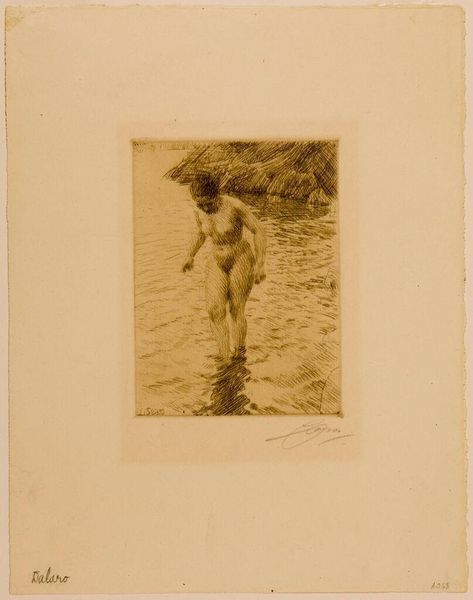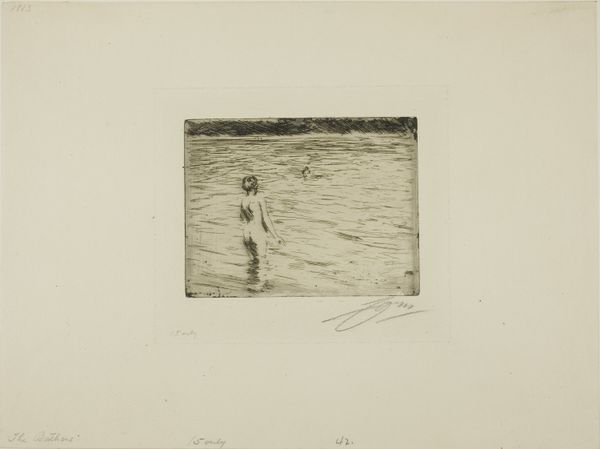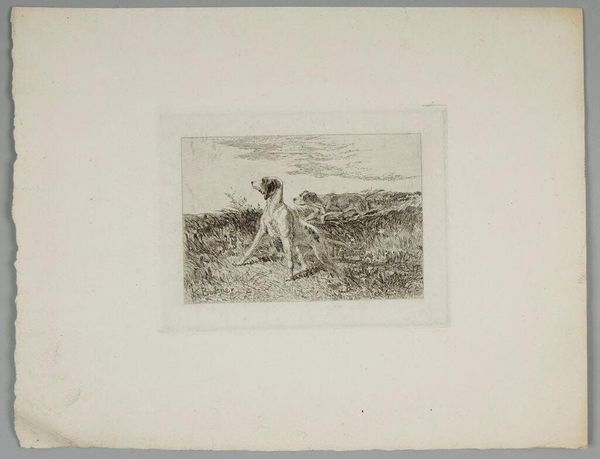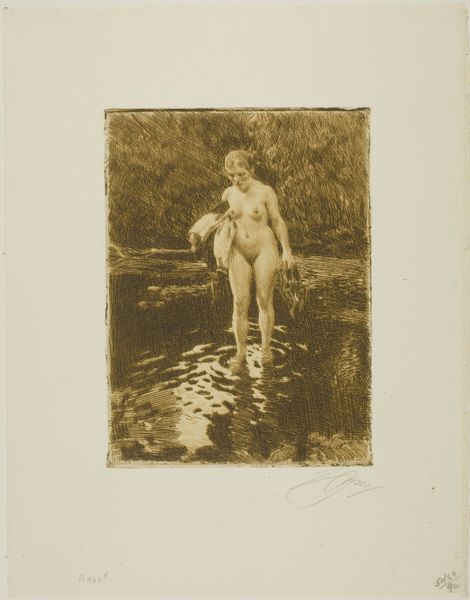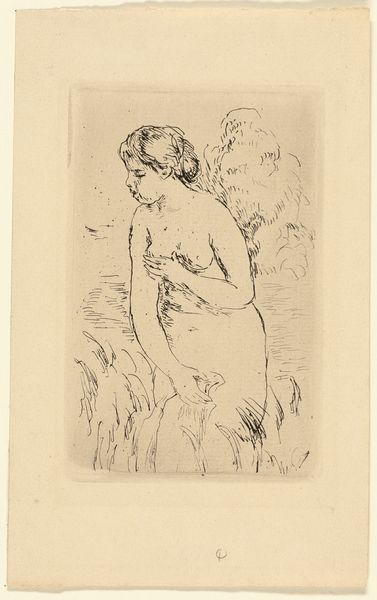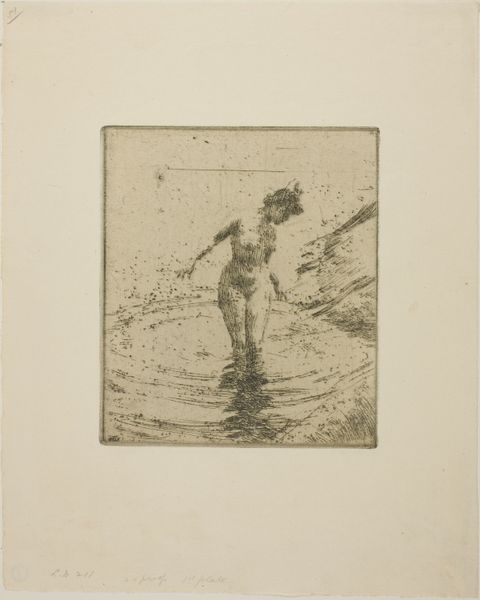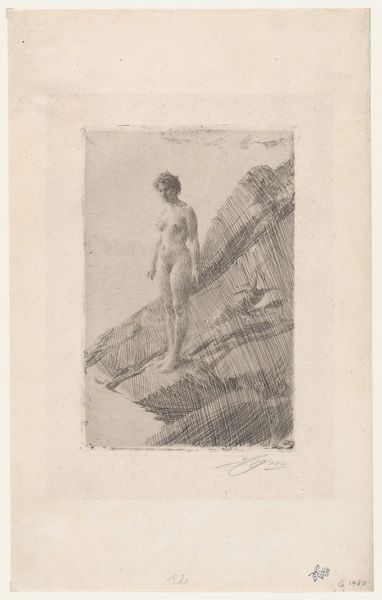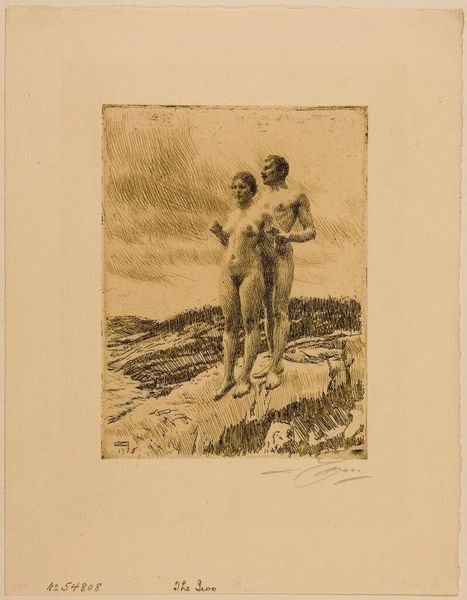
Copyright: Public Domain: Artvee
Editor: This is "Wet," an etching by Anders Zorn from 1911. It’s incredibly detailed, given the medium – you can almost feel the water. What's your take on this? Curator: For me, the power of "Wet" lies in its meticulous etching technique. Consider the labor involved: the precise cuts into the metal plate, the repetitive dipping in acid, the skilled printing process. How does this deliberate act of making, this *production*, influence our interpretation of the nude figure and the bathing scene? Editor: It does lend it a sense of... industry, almost. Like something manufactured rather than purely inspired. Curator: Exactly! And that friction is crucial. Zorn wasn't just depicting a sensual scene; he was engaging with the *means* by which such scenes were disseminated and consumed. The print medium itself invites a discussion about access, ownership, and the market. Was Zorn subverting high art expectations, engaging in commerce, or both? Editor: That’s interesting. I hadn’t considered how the method influenced the meaning so directly. The etching almost democratizes the image. Curator: It makes you think about who is viewing this and where? And further, how does the "wetness" signified in the image connect to the literal wetness of the etching process itself? This connection emphasizes the physicality of art production. Editor: So, not just about the subject, but the whole journey, from the artist's hand to, say, a collector’s wall. Curator: Precisely! By acknowledging the labour and materiality, we move beyond simply appreciating beauty, we engage with the very conditions of art's existence within a specific historical context. Editor: I see this piece so differently now. Thinking about the material production has definitely deepened my understanding. Thanks! Curator: My pleasure! It’s vital to always consider how art is produced as much as what it depicts.
Comments
No comments
Be the first to comment and join the conversation on the ultimate creative platform.
